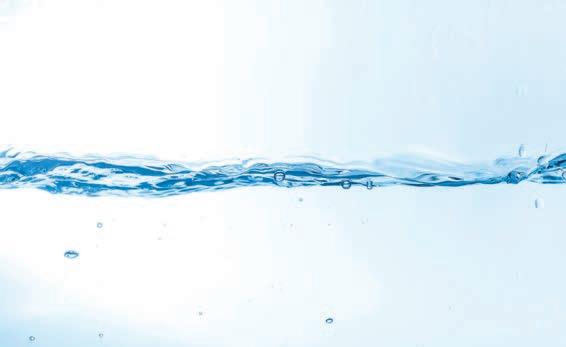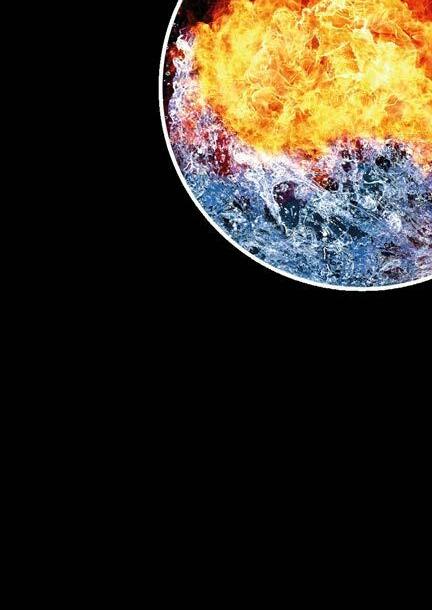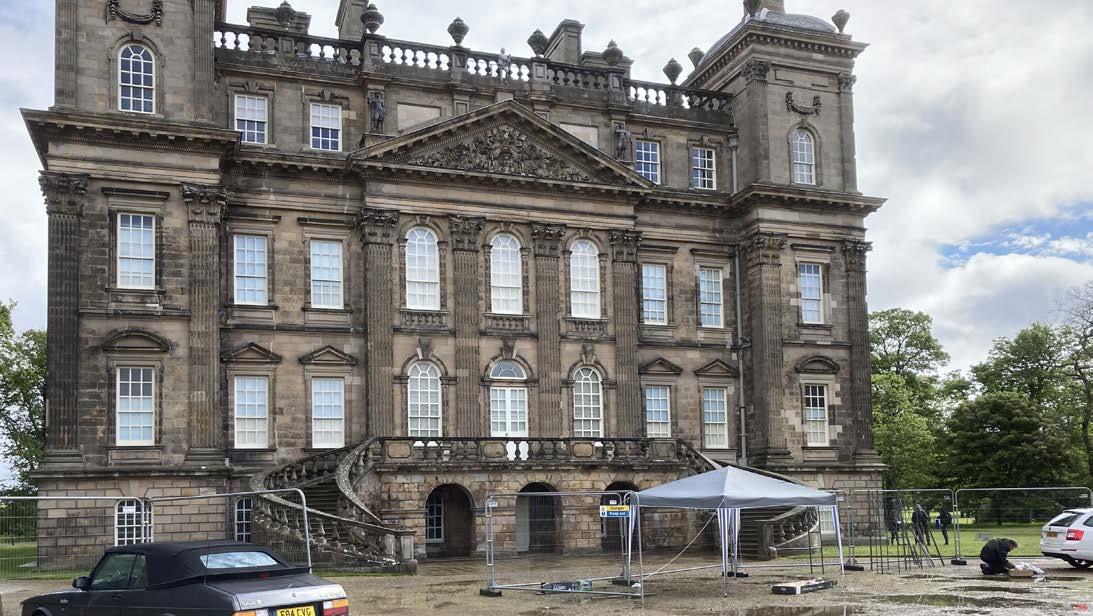
14 minute read
Duff House – 25 years of safety with sprinklers
from BAFSA focus May 2022
by BAFSA
Preparations for sprinkler testing
READERS OF SPRINKLER FOCUS WILL NOT NEED TO BE REMINDED OF THE LITANY OF SERIOUS FIRES IN HISTORIC BUILDINGS OVER THE PAST 50 YEARS. THE MOST RECENT TRAGEDY, INVOLVING THE MAJOR DESTRUCTION OF PARTS OF NOTRE DAME CATHEDRAL, IN PARIS ONLY SERVE TO POINT HOW VULNERABLE OUR BUILT HERITAGE REMAINS REFLECTS STEWART KIDD, SPECIAL PROJECTS ADVISER, BAFSA
Advertisement
heritage organisations in Scotland have a track record of utilising automatic fire suppression systems (AFSS) to supplement more conventional fire protection measures. The National Trust for Scotland, The National Library of Scotland and Registers of Scotland have all utilised AFSS.
In 1995, Duff House, a Category A building, then largely empty and unused building in the care of Historic Scotland (now Historic Environment Scotland) underwent a major refurbishment to make it a suitable location for the display of arts and antiquities from the collections of the National Galleries of Scotland.
The refurbishment undertaken had been informed by a major fire strategy review and included the installation of an air sampling detection system, electronic point detection and an automatic fire sprinkler system protecting the whole property. The fire systems were supplemented by a sophisticated security and surveillance installation. The lifting of floorboards to allow for re-wiring greatly facilitated the installation of sprinkler pipework on the upper floors.
The presence of the sprinkler system was deemed essential not only to protect this important building, which is open to the public, but also to protect the valuable contents which are in the care of the National Galleries of Scotland. The property’s location means that the initial fire service response is from retained fire crews and even under ideal conditions it could take up to 90 minutes for additional appliances and specialised equipment to respond from Aberdeen or Inverness.
The upcoming 25th anniversary of the sprinkler installation generated a consultant’s recommendation that the sprinkler
system should be subject to the 25-year test protocols as required in TB203 of the LPC Sprinkler Rules. At the same time, a second recommendation (yet to be implemented) proposed the installation of a new packaged pump house to replace the existing underground structure which has proved to be unsatisfactory from a maintenance perspective and which had been affected by riverine flooding.
Any entry to the tank requires full confined spaces protection, including harness and hoist, air monitoring and a standby person. During the 25-year monitoring exercise, several entries to the pump house were necessary and this served to confirm to HES personnel the very real need for a new pumphouse.
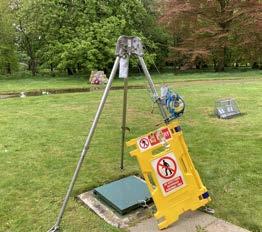
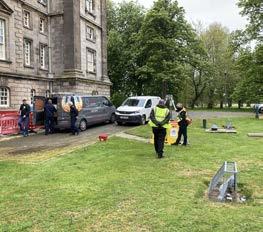
Access to underground pumphouse
MAINTENANCE OF AUTOMATIC SPRINKLER SYSTEMS
While the Duff House system was installed in compliance with the BS 5306 Part 2 (1990), the standard was silent on 25 year testing and indeed, also silent on any requirements for verifying sprinkler heads or the condition of pipework. TB6 of the 2000 iteration of the LPC Rules is also silent on any specified testing procedure for sprinkler heads. It was therefore decided to utilise the requirements of TB203.3.8.3 which specifies 25-year testing of sprinkler heads (replacing the Annex K of BS EN 12845-1 (2019). Annex K additionally suggests the flushing and pressure testing of pipework and the internal and external examination of the pipework with removal of pipe sections for detailed examination.
DUFF HOUSE SPRINKLER TEST PARAMETERS
Following extensive discussions with all parties it was agreed that the following tests would be undertaken:
At least 10 sprinkler heads to be removed, immediately replaced with new heads, and the old heads sent to the FPA for testing. The heads selected for testing represented a cross section of locations and environments in the building including those subject to the greatest fluctuations of temperature and humidity. Locate and remove the pipe sections identified by HES for visual examination on site and immediate replacement of sections by new pipe. Pipe sections to be then subject to metallurgical tests off-site. Relocation of a single sprinkler head in the Dry Store to a new location in the same room as agreed between the consultant, the contractor and HES. All work to be subject to an agreed Method Statement with an absolute prohibition against hot work within the building.
It was also agreed that the opportunity would be taken with the Installation drained to install a new ‘ZoneCheck’ device at a location to be agreed with the HES architect, HES Operations Department, the contractor and the consultant. The location selected was convenient in that there was a length of surface run pipe present at high level which would obviate any casual interference with the unit. The fire alarm contractor and the site electrician were present at the same time to allow the necessary connections.
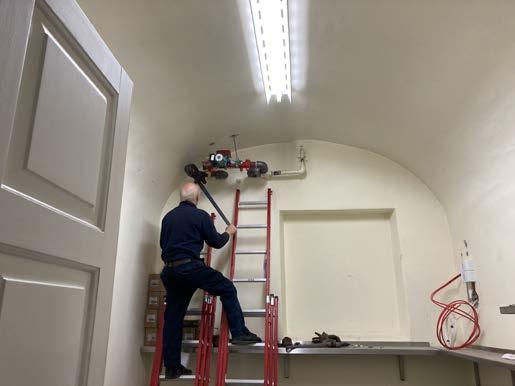
METHOD STATEMENT
The HES M&E consultant and the sprinkler consultant worked with the nominated sprinkler contractor to produce and outline Method Statement supplemented by individual, detailed method statements covering the following:
Whole system flush and drain
Removal and replacement of designated sprinkler heads – including details on how residual water in range pipes is to be controlled in a highly sensitive environment.
Removal of designated pipe sections and reinstatement - including details on how residual water is to be controlled in a highly sensitive environment.
Installation of ZoneCheck unit
Recommissioning of AFSS and air/water tests and surveillance
It was recognised at an early stage of planning that full compliance with the TB would not be practicable most notably in the number of heads to be tested. Table203.T1 suggests that fir installation of up to 5000 installed heads, 20 should be sampled. In the case of Duff House with fewer than 500 heads, it was considered that a minimum of 10 should be sampled. It was also recognised that while the samples should be representative of the conditions in the building there should be some latitude in respect of avoiding locations where damage to fine surfaces could be encountered or where leakage following recommissioning could damage collection items, especially wall hung paintings.
SAFETY DURING THE TESTS
Following expressions of concern expressed by NGS staff it was decided to modify the original selection of heads for removal and focus on those in areas where there were no collections items which might be damaged. While this meant that the samples taken deviated from the LPC Rules requirement, this was acceptable as the support locations (such as attics, storerooms, kitchens and corridors) were the areas most subject to higher humidity levels than the showrooms and also subject to temperature fluctuations.
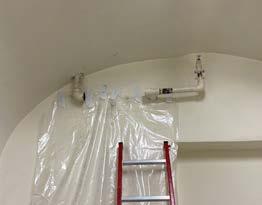
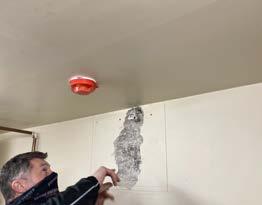
Protective sheeting prior to installation of Zonecheck Chasing wall prior to removal of sidewall head
The agreed work specification included requirements for protection of surfaces from leaking or ejected water. Where chasing work was required, this was undertaken by HES own craftspeople.
The small on-site project management team (the HES District Architect, HES M&E specialist, the resident property manager and the consultant) were to be on site for the duration of the works and this proved very useful in ensuring that ad-hoc changes in the plan could be undertaken swiftly. Given that the project was undertaken during COVID restrictions, each of the team members had their own designated office space.
THE SPRINKLER HEAD SAMPLING PROCEDURE
Following system isolation and drain down, the selected heads were removed, labelled and boxed. Great care was taken to prevent water damage to surrounding areas but, in the event, the drain down left little water in the system. Interestingly, the attic pipework retained the most water and the opportunity was taken to fit additional drain valves at the lowest level in the system to facilitate future work.
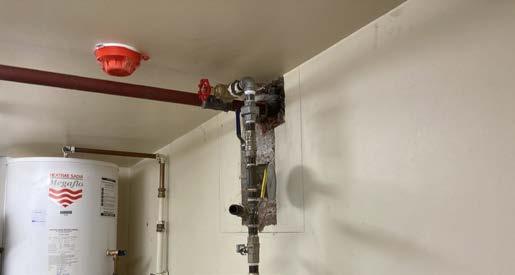
New drain line and pressure gauge. Note smoke detector has been covered to prevent ingress of water.
The new pipework feeds a relocated sidewall sprinkler head with protective cage and the pressure test pump connected to the drain line.
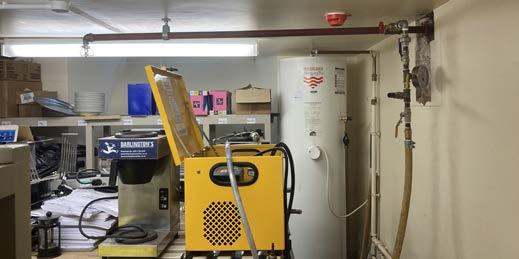
The heads removed were labelled and then placed in a box previously supplied by the FPA. Pipe sections were also labelled for shipping.
Visualisation of the pipe sections suggested that there was, in fact, little corrosion and virtually no obstruction.
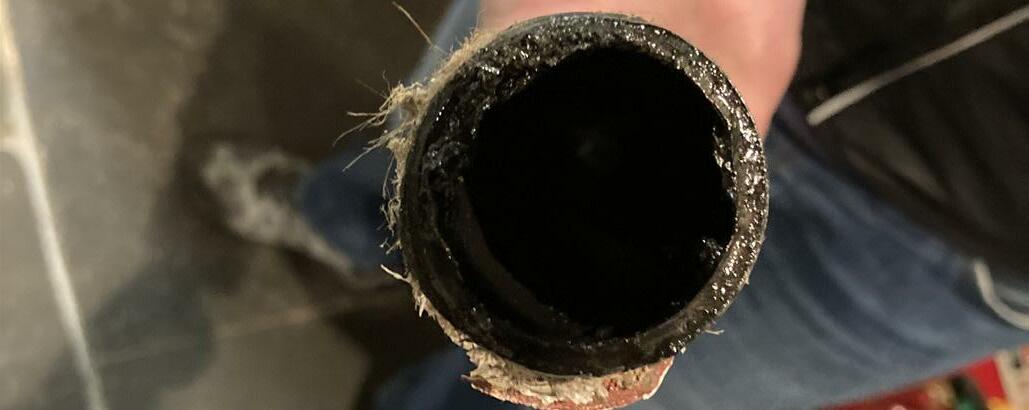
Specimen 7
REPORT ON SPRINKLER HEADS REMOVED Customer The FPA normally quote a turn round time of 3 – 4 weeks for test Label reports but given the importance of the building and its contents and the fact that this was probably the first 25-year test carried out on a listed building they delivered the report within a week.
Extracts from the report can be seen below in Figures 1, and 2 which generated the conclusion that the heads were in an acceptable condition to remain in place for the foreseeable future. Figure 1
Cloak room, 1st floor, 25/5/21 Deposits and Paint
Slight build-up of dirt/dust. Paint daubed on the valve assembly and non-critical areas (see Figure 6). Mechanical Damage
None identified.
Waterway No significant foreign matter present. Operating Mechanism 57°C, orange, glass bulb, 3mm Ø. Markings Deflector plate: ‘1994’, ‘135°F’, ‘57°C’, ‘F1FR’, ‘EC-6’, ‘EC SPKR’, ‘HORZ. SIDWEALL’, ‘UL 701A’, ‘ULC. Flats: ‘RASCO’, ‘F1’.
Page 10 of 17
Specimen 8
Customer Label Specimen 10 Deposits and Customer Paint Label Attic space, 25/5/21
Slight build-up of dirt/dust.Attic space, 25/5/21
Mechanical Deposits and Damage Paint None identified. Slight build-up of dirt/dust.
Figure 2
Waterway No significant foreign matter present. Operating Mechanism 68°C, red, glass bulb, 3mm Ø. Markings Deflector plate: ‘1994’, ‘UL 701A’, ‘ULC’, ‘68°C’, ‘155°F’, ‘F1FR’, ‘Q.R. EC’, ‘PEND.’. Flats: ‘RASCO’, ‘F1’.
Specimen 9
Customer Label Attic space, 25/5/21
Deposits and Paint
Mechanical Damage Slight build-up of dirt/dust. Build-up of turquoise deposits on the valve assembly.
None identified.
Waterway No significant foreign matter present. Operating Mechanism 68°C, red, glass bulb, 3mm Ø. Markings Deflector plate: ‘1994’, ‘UL 701A’, ‘ULC’, ‘68°C’, ‘155°F’, ‘F1FR’, ‘Q.R. EC’, ‘PEND.’. Flats: ‘RASCO’, ‘F1’.
Specimen 11
Customer Label Attic space, 25/5/21
Mechanical Damage Deposits and Paint None identified.
Waterway No significant foreign matter present. Operating Mechanism 68°C, red, glass bulb, 3mm Ø. Markings Deflector plate: ‘1994’, ‘UL 701A’, ‘ULC’, ‘68°C’, ‘155°F’, ‘F1FR’, ‘Q.R. EC’, ‘PEND.’. Flats: ‘RASCO’, ‘F1’.
Slight build-up of dirt/dust. Build-up of turquoise deposits on the deflector plate, valve assembly and noncritical areas (see Figure 7). Mechanical Damage
None identified.
Waterway Build-up of brown deposits. Operating Mechanism 68°C, red, glass bulb, 3mm Ø. Markings Deflector plate: ‘1994’, ‘UL 701A’, ‘ULC’, ‘68°C’, ‘155°F’, ‘F1FR’, ‘Q.R. EC’, ‘PEND.’. Flats: ‘RASCO’, ‘F1’.
Photos 7 and 8 show the heads as received by the FPA with their comments on condition. Figure 3 shows the analysis of the evaluation of the pipe sections. Page 11 of 17
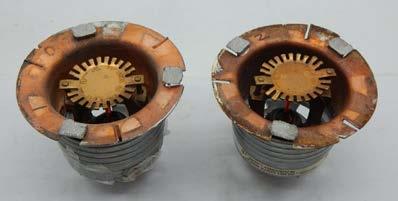
Figure 1 – Specimens 1-2

Figure 2 – Specimens 3-7
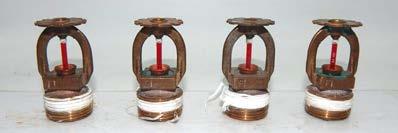
Figure 3 – Specimens 8-11
Photo 7: Overview of heads as received by the FPA
Page 12 of 17
Figure 4 – Specimen 1 Ceiling plate broken off sprinkler body.
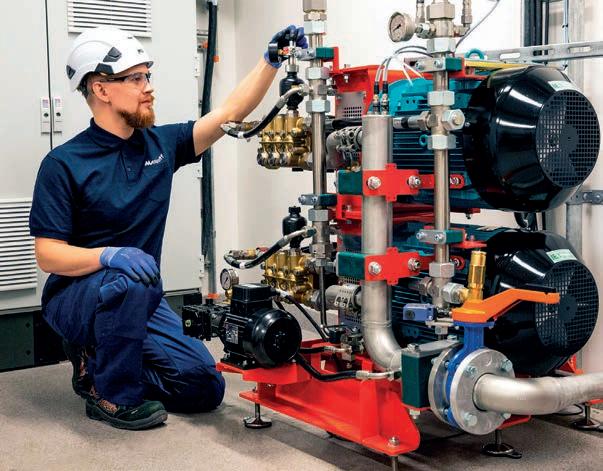
Figure 6 – Specimen 7 Paint daubed on the valve assembly and noncritical areas. Figure 5 – Specimen 3 Build-up of brown deposits in the waterway.
Figure 7 – Specimen 11 Build-up of turquoise deposits on the deflector plate, valve assembly and noncritical areas.
Photo 8: FPA Comments on head condition
FPA/103139.001
4 Summary of Results
2 pipe samples were received for evaluation. The visual inspection revealed that all crosssections had a light build-up of rust or sediment on the internal surfaces. The measured thicknesses of these deposits are shown in the table below:
Specimen Number
1
2
Measured Mean Thickness of Deposits on the Internal Surface (mm)
0.2
0.2
Approx. Reduction in Cross Sectional Area of Pipe Due to Deposits (%) 2.9
1.4 FPA/103139.001
Measurements taken of the external pipe diameter and pipe wall thickness have been compared to the dimensional requirements of BS EN 10255:2004 for medium and heavy series steel tubes as detailed in tables 3, 4 and 5 of the standards respectively and shown in Annex B of this report. The results are shown below:
Specimen Number
Mean Outer Diameter (mm)
Mean Wall Thickness (mm) Meets the Dimensional Requirements of BS EN 10255:2004
1 33.7 3.1 1" Medium Gauge 2 60.3 3.4 2" Medium Gauge
Figure 3: Report on Pipe Conditions 5 Commentary
CONCLUSIONS
Given that the author believes this was the first example of a 25-year test undertaken in a listed building there was no template to follow or list of lessons of things to do – and things to avoid!
The fact that the worst disclosures relate to a broken celling plate, brown deposits on one waterway, some paint splashes and minor corrosion in non-critical areas was reassuring - and certainly most welcome to HES and NGS.
Even though the project was undertaken during COVID restrictions there were few issues which arose which the on-site team could not handle. The delay to the project (planning started planning in 2017/8) means that all parties had had the opportunity to understand the process and possible risks. The original plan had the 25-year test to take place alongside the installation and commissioning of a replacement pump house but this was deferred.
Lessons learnt included the need for and value of close coordination with all parties and the use of a consultant with significant knowledge of sprinklers and familiarity with the protected property was considered to have been very useful as was the presence of HES specialists. The selection of the right contractor was agreed to be a key item in the process and the flexibility needed to agree on-site variations to the original plan was key to this. It was fortuitous that the contractor selected was already familiar with the building and the system.
The only issue of note resulted from a very minor leak in one of the joints between the Zonecheck unit and the existing pipework. This demonstrates the danger in reusing an existing joint rather than replacing it.
The visual inspection revealed: • Corrosion deposits were identified, this reduces the cross-sectional area of the pipe, and therefore system performance. Also these deposits may move to areas of the system that have a lower cross-sectional area where they will have an even more significant impact on performance potentially causing a complete blockage. • The pipes had experienced a build-up of red/orange deposits which could be due to a high level of oxygen being present in the system. It may be suitable to install an airventing device to remove air pockets. A reduction in trapped air will reduce oxygen available for corrosion. It may be appropriate to consult the system owner, authority having jurisdiction and the fire insurer in relation to these observations. Page 11 of 16 Page 12 of 16
Your safety is our expertise.
With HI-FOG®, you not only get a high-quality fire protection system, but also professional support every step of the way – from design and turnkey deliveries to services.
As a pioneer in the industry with thousands deliveries of high-quality systems, we are your trusted expert in fire protection systems and services. We protect life and business continuity.
Marioff Ltd
25 Earl Haig Road, Hillington, Glasgow G52 4JU, Scotland sales.marioff.co.uk@carrier.com
www.marioff.com
Marioff is a leading developer of water mist fire protection technology and supplies system solutions worldwide. The company’s innovative HI-FOG® water mist fire protection system safely controls and suppresses fire using significantly less water than conventional sprinkler systems, reducing water damage, cleanup time and operational downtime. Marioff is a part of Carrier Global Corporation, a leading global provider of healthy, safe and sustainable building and cold chain solutions.
For more information, visit www.marioff.com. ©2021 Carrier. All Rights Reserved.

Hydraulic Calculation Software for the fire protection industry Canute FHC hydraulic calculation software
Easy to use Low cost of ownership UK based support & training National, European & International standards
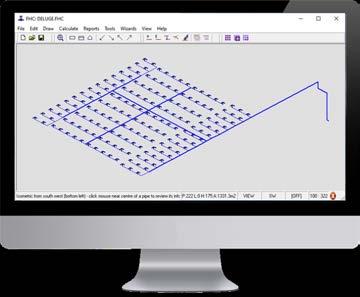
BS EN 12845, BS EN 16925, BS 9251, BS 8458, BS 8489 NFPA 13/13D/13R, NFPA 750, FM, INSTA, CP52, ABIB
CANUTE LLP
Hydraulic Calculation Software , Training, Design & Consultancy
15, Queen Square, Leeds, LS2 8AJ w: canutesoft.com t: +44 (0)113 328 0350




